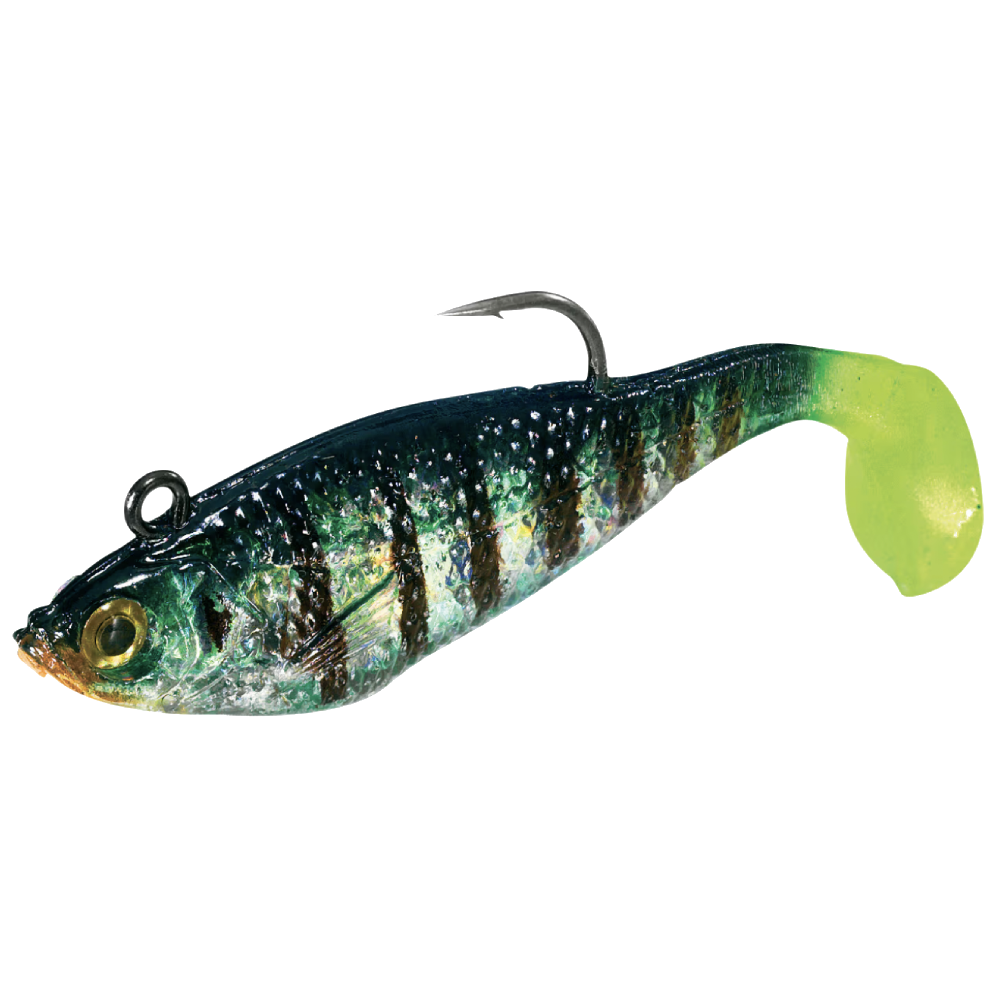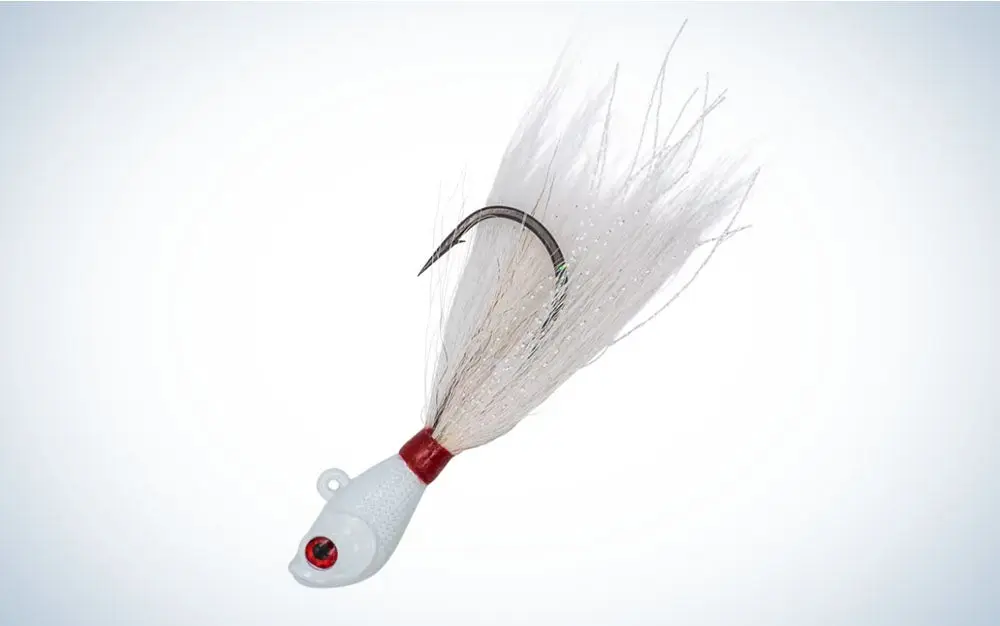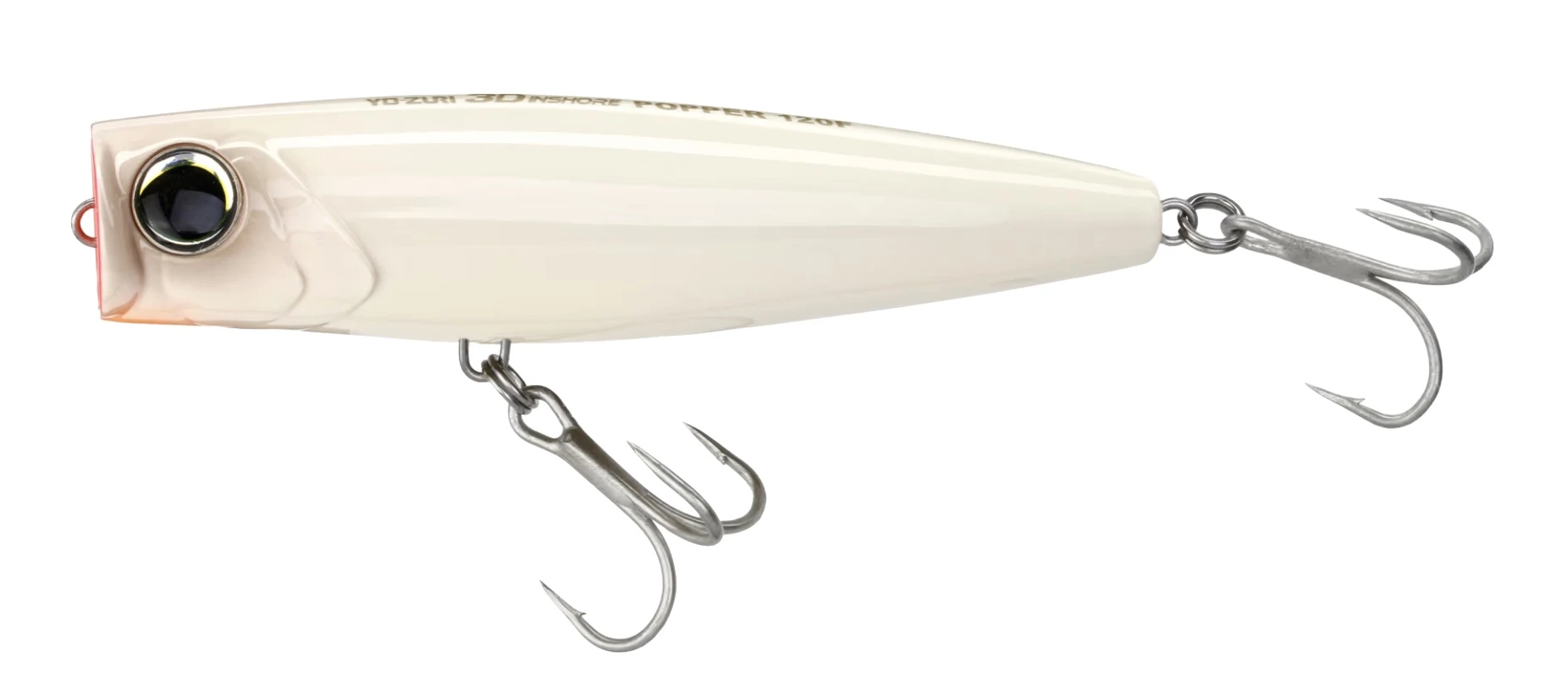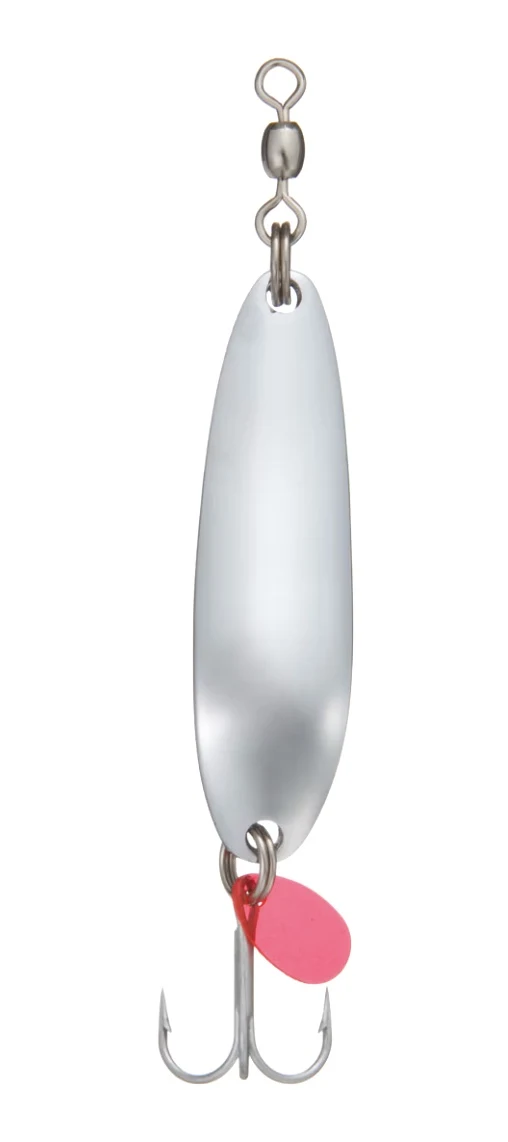Saltwater striped bass aren’t very hard to catch. Many “Insta-famous” anglers and striped bass fishing influencers want you to think otherwise, but the reality is that the most difficult part of the game is knowing where to be to get your bait or lure in front of hungry bass. If you find yourself in range of fired-up stripers, it rarely makes a difference if you’re using a jig, soft-plastic shad, or live bait—they’ll eat it.
That’s not to suggest there aren’t times when stripers can be fickle, but if you understand how these fish feed and use their environment to hunt, you can quickly focus on the most likely areas to target within any part of the region. Likewise, understanding how they migrate can help you pinpoint the best time to get after them in your area. Here’s a basic breakdown of all the key elements you need to know to get on the fast track to striper success.
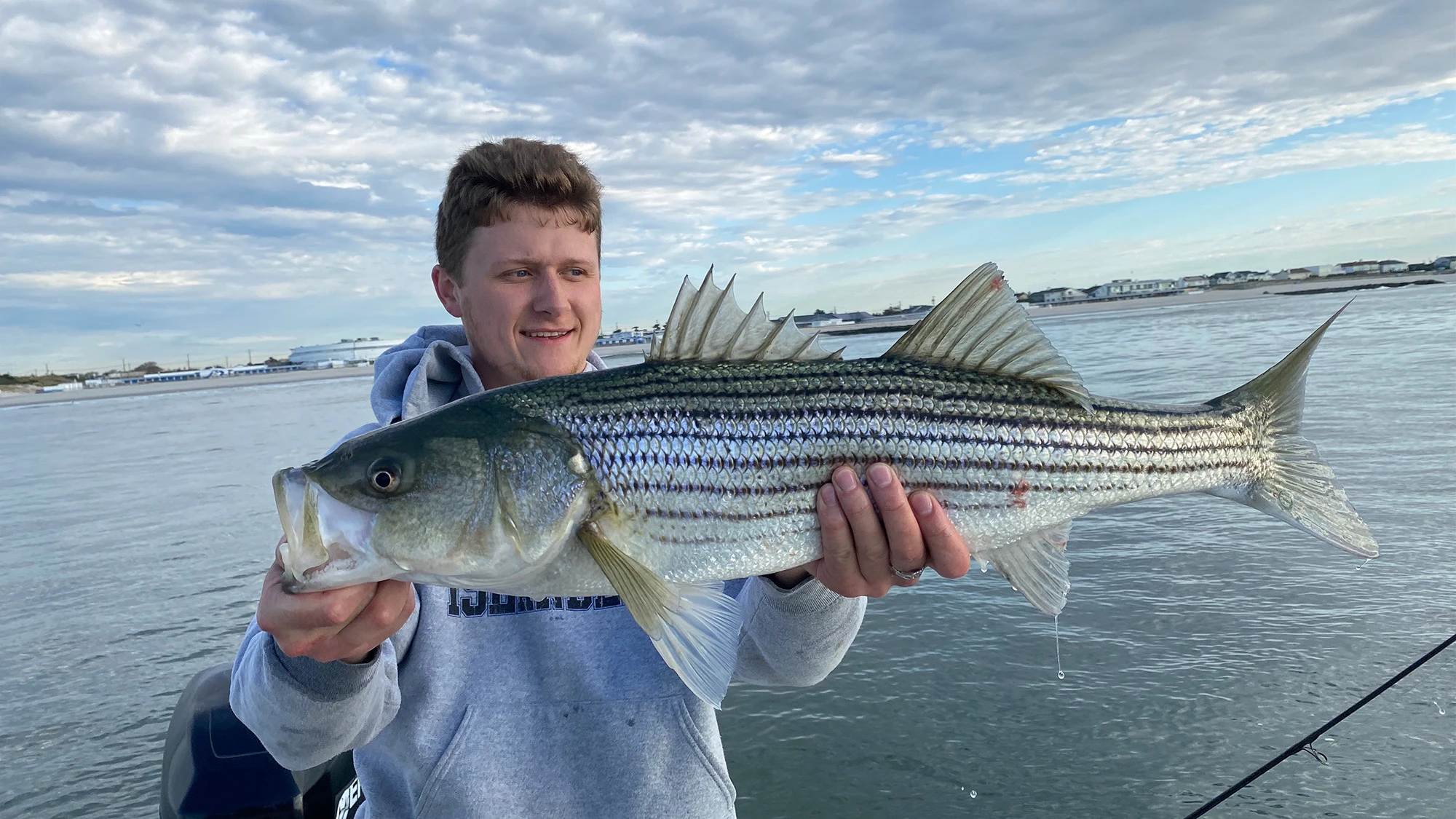
Understanding Striper Migrations
There are two types of striped bass on the East Coast—migratory and resident. The migratory fish tend to be larger, though, in any location that has resident bass, it’s possible to find one weighing 15 pounds or better at practically any time of year. The patterns of the big migrators are constantly changing, most would agree, due to climate change, but the general program goes like this.
The bulk of the migrating, oceanic striper population winters in the Mid-Atlantic, mainly Chesapeake Bay and straggling into North Carolina. Come spring, a percentage will spawn in this region, but most will begin swimming north. Groups of fish will then break off to their respective breeding rivers, such as the Delaware, Raritan, Hudson, Connecticut, and Thames, to name a few. After spawning upriver in freshwater, the stripers will drop back into the bay for a while before heading back to the ocean and continuing north.
Historically, these fish summered in the cooler waters of Massachusetts and Maine. Over the last few years, however, the Canadian Maritimes and Quebec have seen an explosion of striped bass, suggesting a warming climate is pushing them farther north. Conversely, when northern coastal waters cool in fall, the stripers follow the coast back to the Mid-Atlantic, though it’s rare for many to wind up in the far southern end of their traditional wintering grounds. For anglers from Delaware to Rhode Island, this seasonal migration is when the bite for big fish peaks from April through June, then again from late September through December.
The fish that are spawned each spring remain in the freshwater rivers and inland bay systems for years, creating the resident populations of smaller bass along their entire range that can be caught all summer long. Once these bass reach a larger size, they’ll join the migrating fish on their annual coastal trek.
Striped Bass Habitat
The preferred habitats of coastal striped bass are what makes them one of the most popular saltwater targets in the country. Though there have been tagged fish documented swimming nearly 100 miles offshore, stripers primarily stick to inshore waters, bays, and coastal rivers. This makes them accessible to thousands of anglers, and while having a boat is certainly an advantage, it’s not necessary to catch them.
During their migration, striped bass hug the coastline primarily because it provides food. From menhaden to squid, clams to crabs, sea worms to shrimp, and anchovies to sand eels, inshore waters present a smorgasbord for bass, which dine on a wide variety of prey. This also boosts their status as popular targets because it means they can be caught via many different tactics.
Stripers are purpose-built for inshore environments. They can handle strong river and tidal currents and find prey in the roughest surf despite waves roiling the sand and reducing visibility. They can be found roving through shallow areas with jagged, rocky bottoms or lazily cruising over calm mud flats in a bay system. They are incredible nocturnal hunters. Unlike many saltwater species, they will use structures like jetties, bridge pilings, and break walls to lie in and ambush prey. Meanwhile, in open water, they will team up like a wolf pack to attack massive schools of baitfish, creating what’s known as a “blitz.”

How Tides Affect Striped Bass
Except when targeting striped bass in far inland reaches of coastal rivers, understanding how these fish use the tide is critical to angling success. Because they are so adept at feeding in current and using it to their advantage, they tend to bite best within certain tidal windows, and it makes no difference if you’re fishing from a dock in a back-bay creek, along the ripping surf, or just off the beach in a boat—moving water prompts feeding.
Striped bass behave similarly to trout in that they’ll gravitate to areas that have minimal current, but where they can dart out into heavier current when a morsel of food comes drifting past. These hiding spots could be anything from a sandy hump on the bottom to a lone dock piling or a skinny point of land. Stripers will hold down current of such structures, and the faster the current is moving, the more food it carries to them. Therefore, slack tide—the point when the water isn’t moving at all—tends to be a dead time to fish. It’s not uncommon to completely blank in an area you know should hold fish and then suddenly get hit on nearly every cast when the tidal current speed increases.
The prime point in the tide will vary by location and scenario, but as a general rule, an outgoing tide is the best. Start fishing when the tide is high and keep at it for the first few hours of the falling tide. Note how long it’s been since high tide when you start catching fish, as those bass will feed around the same point in the tide daily or until they move out of the area.
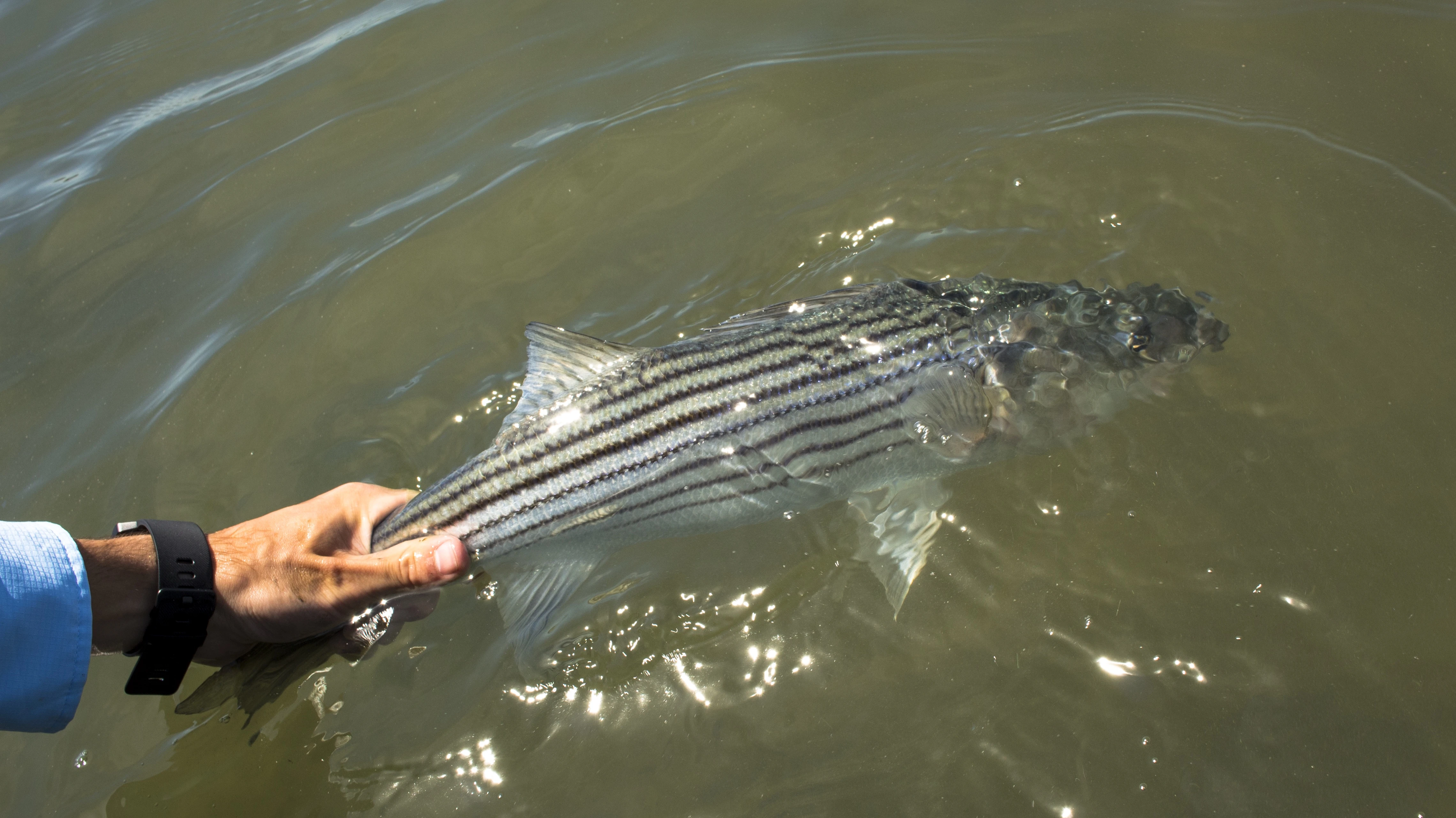
Striped Bass Fishing Tackle
It’s very difficult to pinpoint an “all-around” rod and reel for coastal striped bass fishing. The perfect setup depends on three key things—where you’re fishing, what you’re casting, and the average size of the fish in that area. With that in mind, devout striper anglers usually have an arsenal of rods and reels fine-tuned for a variety of situations. While you’ll likely have to piece together the perfect kit for your area, here’s a general guide to getting outfitted for bass.
5- to 10-pound Stripers
Rod: 7-foot, medium action
Reel: 3000 size
Line: 15- or 20-pound braid
Leader: 15-pound fluorocarbon
10- to 20-pound Stripers
Rod: 7-foot, medium/heavy action (bay/boat), 9-foot medium/heavy action (surf)
Reel: 5000 size
Line: 20- or 30-pound braid
Leader: 20- to 40-pound fluorocarbon
20- to 30-plus-pound Stripers
Rod: 7.5-foot, heavy action (bay/boat), 10-foot medium/heavy action (surf)
Reel: 6000 size
Line: 40- or 50-pound braid
Leader: 30- to 50-pound fluorocarbon
Striped Bass Fishing Lures
Stripers will hit a number of different lures. And, like everything gear-related in this game, the proper lure to throw varies by location and fish size. Stripers on a back-bay mud flat, as an example, might be dining on tiny crabs or 2-inch-long baitfish, whereas big “cows” along the oceanfront might be chowing down on 12-inch menhaden or mackerel. Luckily, the most popular striper lures can be scaled, meaning they’re available in a wide range of sizes. Here are some of the must-haves, regardless of location.
Swim Shads
Pre-weighted, soft-plastic shads with a kicking paddle tail work well in deep or shallow water, as they can be reeled in quickly or hopped along the bottom.
Bucktail Jigs
Depending on the color, these simple lead jigs with a deer hair tail can match anything from a baitfish to a shrimp to a crab crawling along the bottom.
Poppers
Nothing is more exciting than a topwater striper bite. Always have a few poppers with strong hooks on hand.
Metal Lures
Metal spoons and jigs cast a mile and can be fished a variety of ways, from a steady retrieve to a fluttering rise and fall while jigging.
Diving Plugs
Hard-plastic plugs with a diving lip can match a huge variety of fish species stripers crave, and they work well in current and calm water.
Using Bait for Striped Bass Fishing
One of the most appealing aspects of striped bass is the many ways they feed. At times, they are highly predatory and ravenous, striking from ambush points and corralling prey. On the other hand, fish that might have been chasing mackerel one day can behave like lazy catfish the next, slurping dead forage or slow prey off the bottom like a vacuum cleaner while expending minimal energy. Because of their willingness to feed this way, a trophy fish is as attainable to an angler sitting on a lawn chair and waiting as it is to a fisherman walking miles and working lures aggressively. If you prefer this slower approach to striper fishing, consider sending out these baits.
Fresh Cut Baitfish
As with trout fishing, you always want to try to “match the hatch” for striped bass. Ask a local tackle shop what kinds of baitfish are prevalent at the time. Frozen bait will catch stripers, no doubt, but fresh is always better. This could be menhaden, mackerel, mullet, or peanut bunker—and how big a chunk you use depends on the size of the fish you’re targeting. When chunking for trophy fish, anglers routinely fire out an entire menhaden head; in the back bay, a smaller “steak” cut from a fresh mullet is likely a better option.
Clams
Believe it or not, striped bass love clams. They’ll root for busted clams in the surf and bay, sucking out the delicious meat inside. The scent of a fresh clam soaking on the bottom will be sniffed out by area stripers in short order. Just make sure you use some bait thread to keep a shucked clam on your hook, as their soft innards cause them to fly off during a cast.
Crabs
While maybe not the most common bait for stripers, in certain scenarios, these crustaceans will outfish other baits and lures. Obtaining them, however, can be a chore as bait shops within the stripers’ northern range don’t typically carry them. Species like sand crabs and calico crabs must be raked on the beach. Blue crabs can be trapped but must be of legal size to harvest. Green crabs can be collected by flipping rocks at low tide or from some bait shops, mainly in the fall.
Large crabs are often cut in half with shears and soaked on the bottom like any other dead bait. Small crabs are usually drifted whole with little or no weight in areas with stronger tidal flow.
Eels
Live eels are one of the most potent striper baits there is, but be warned—they’ll cost you. Although many tackle shops stock eels throughout the entire striper season, they’re hard to obtain and not cheap. So, when shops have to re-sell them, they’re marked up even higher. If you do pony up for some eels, hook them through the eyes…then hope there aren’t any bluefish around to chop your pricey baits in half.
Sand and Bloodworms
Like eels, live sand and bloodworms are very expensive. Historically, massive hand-digging operations thrived in Maine, which supplied bait shops all over striper country. Today, the worm business is shrinking, making it more difficult for shops to get them and far more expensive for you to buy them. The perk, however, is that the scent given off by these ugly creatures is practically irresistible to a striper.


